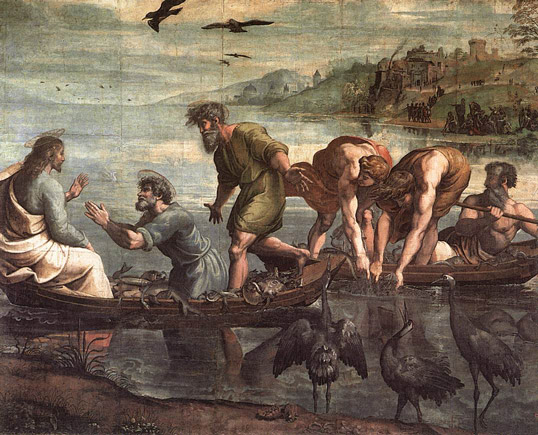The views expressed in our content reflect individual perspectives and do not represent the authoritative views of the Baha'i Faith.
In a 1955 experiment, a faith healer was asked to heal three chronically and severely ill bedridden patients from a distance without the patients’ knowledge of the faith healer’s acts. Nothing happened.
Next, the experimenter told the patients that a faith healer was going to be called in to treat them from a distance at a certain time. The faith healer, however, was not called and did not do as the patients thought. All three patients showed dramatic and remarkable improvement at the suggested time. One was permanently cured; the other two were not, but showed striking temporary responses. These three patients were greatly helped by a scientifically false belief. Perhaps many miracles, then, are really responses of faith.
Faith is strong. Jesus said if you have faith you can move mountains. This is not completely a metaphor. Faith can have strong physical effects. In another study of the power of belief, two groups of patients with bleeding peptic ulcers were compared. One group received an injection of sterile water from a doctor, who told them it was a new medicine that would produce relief. The other group received the same injection from nurses who told them that it was an experimental medicine of undetermined effectiveness. The group who was told the medicine was effective had remissions which were “excellent in 70 percent of the cases lasting over a period of one year.” The other group showed only a 25 percent remission rate.
Can faith such as this be behind the cures reported in all the sacred scriptures? Baha’i scripture indicates much of what we regard as miraculous can be explained as the power of faith.
Given the above, miracle stories may be highly suspect, prove nothing, and may get in the way of understanding the teachings of the Chosen Ones of God. Indeed, many miracle stories may have started out as a simple metaphor that went amok in the transmission. Consider the following:
In Mark’s Gospel when the disciples did not understand the meaning of Jesus walking on the water, they were told it was because they misunderstood the incident of the loaves (6:52). Mark records two incidents of multiplying loaves; the second probably the result of a copier’s error (Mk 6:33-34 and 8:19). Luke and John contain one account (Luke 9:11-17; John 6:2-14). Matthew, consistent with his tendency to include and expand all miraculous events, contains both (Mt 14:13-21 and 15: 32-38). Clearly the evangelists wanted us to believe that Jesus multiplied a couple of loaves and fishes so that several thousand people were fed. But did they, like the disciples, misunderstand the meaning of what actually happened? In the gospel of Matthew, after relating the second story of feeding the masses with a few loaves and fishes, Jesus rebuked His disciples for failing to understand why they should beware of the leaven of the Pharisees and Sadducees. The text reads:
And they (the disciples) reasoned among themselves, saying, It is because we have taken no bread?
Which when Jesus perceived, he said unto them, O ye of little faith, why reason ye among yourselves, because ye have brought no bread?
How is it that ye do not yet understand, neither remember the five loaves of the five thousand, and how many baskets ye took up? Neither the seven loaves of four thousand, and how many baskets ye took up?
How is it that you do not understand that I spoke not to you concerning bread, but that ye should beware of the leaven of the Pharisees and of the Sadducees?
Then understood they that he bade them not to beware of the leaven of bread, but of the doctrine of the Pharisees and Sadducees. (Mt: 7-12)
Leaven referred to the teaching of the Pharisees and Sadducees. The followers of Jesus were not to eat of this bread, but the bread of the Word of God that came from Jesus (c.f.Jn 6:31ff, Mt 4:4; and Lk 4:4). That seems to be the message that they didn’t understand. So too, they misunderstood the meaning of when Jesus distributed the loaves and fishes. In this event, Jesus gathered the masses near him in “ranks by hundreds, and by fifties,” focusing their attention on him (Mk 6:40). He then blessed the few loaves and fishes and proceeded to pass them out. The gathered masses must have followed his example and done the same. If so, then a double miracle occurred: The people were fed the word of God in the teachings of Jesus they heard, but also in his example of selfless sharing they learned about its power. These were the miracles that required insight, not sight, to see. That was why they were hard for the disciples (and probably the evangelist) to understand.
Here Abdu’l-Baha relates a similar Biblical story and advises us how to understand such miracles:
…most of the miracles of the Prophets which are mentioned have an inner significance. For instance, in the Gospel it is written that at the martyrdom of Christ darkness prevailed, and the earth quaked, and the veil of the Temple was rent in twain from the top to the bottom, and the dead came forth from their graves. If these events had happened, they would indeed have been awesome, and would certainly have been recorded in the history of the times…. These events are not related in any history; therefore, it is evident they ought not to be taken literally, but as having an inner significance. Our purpose is not to deny such miracles; our only meaning is that they do not constitute decisive proofs, and that they have an inner significance. – Some Answered Questions, p. 36.

















Comments
Sign in or create an account
Continue with Googleor